Real-world depression, anxiety & safety outcomes of IM ketamine: a retrospective cohort study
BMC Psychiatry | Published 3 October 2022
Another paper accepted for publication! This study examines clinical data from over 450 patients at Cedar Psychiatry (Numinus) patients who received intramuscular ketamine treatment at our clinics. Take a look at the abstract below to see what we found. Also a big shout-out to Sachin Ahuja, one of our data science interns and now medical student at Western University in Ontario, for leading this study!
Background: Ketamine has emerged as a promising pharmacotherapy for depression and other mental illnesses, and the intramuscular (IM) administration of ketamine is now offered at many North American outpatient psychiatric clinics. However, a characterization of the outpatient population receiving IM ketamine treatment and an evaluation of the real-world depression, anxiety, and safety outcomes of long-term psychiatric IM ketamine treatment has not been reported. This study aimed to evaluate the clinical characteristics, treatment patterns, clinical outcomes, and adverse events of patients receiving IM ketamine treatment.
Methods: Patient data from the electronic health records of a private outpatient psychiatric clinic network in the United States were collected and analyzed retrospectively. Adults with any psychiatric diagnosis who received ketamine treatment only by IM administration from January 2018 to June 2021 were included. A total of 452 patients were included in the cohort.
Results: Patients receiving IM ketamine treatment had a mean of 2.8 (SD 1.4) psychiatric diagnoses. 420 (93%) patients had a diagnosis of major depressive disorder, 243 (54%) patients had a diagnosis of generalized anxiety disorder, and 126 (28%) patients had a diagnosis of post-traumatic stress disorder. Patients received a median of 4 (range 1–48) IM ketamine treatments. Median depression scores (PHQ-9) improved 38% from 16.0 (IQR 11.3–21.8) at baseline to 10.0 (IQR 6.0–15.0) at last treatment (p < .001). Median anxiety scores (GAD-7) improved 50% from 14.0 (IQR 8.0–17.0) at baseline to 7.0 (IQR 4.3–11.8) at last treatment (p < .001). With maintenance ketamine treatments, average improvements in depression (PHQ-9) and anxiety (GAD-7) scores of at least 4.7 and 4.9 points were maintained for over 7 months. An adverse event occurred during 59 of 2532 treatments (2.3%).
Conclusions: IM ketamine is being utilized to treat psychiatric outpatients with multiple mental illnesses not limited to depression. Average depression and anxiety levels significantly improve throughout IM ketamine treatment and do not regress to baseline during patients’ maintenance treatment phase. Prospective studies are recommended to confirm the long-term effectiveness and safety of IM ketamine.
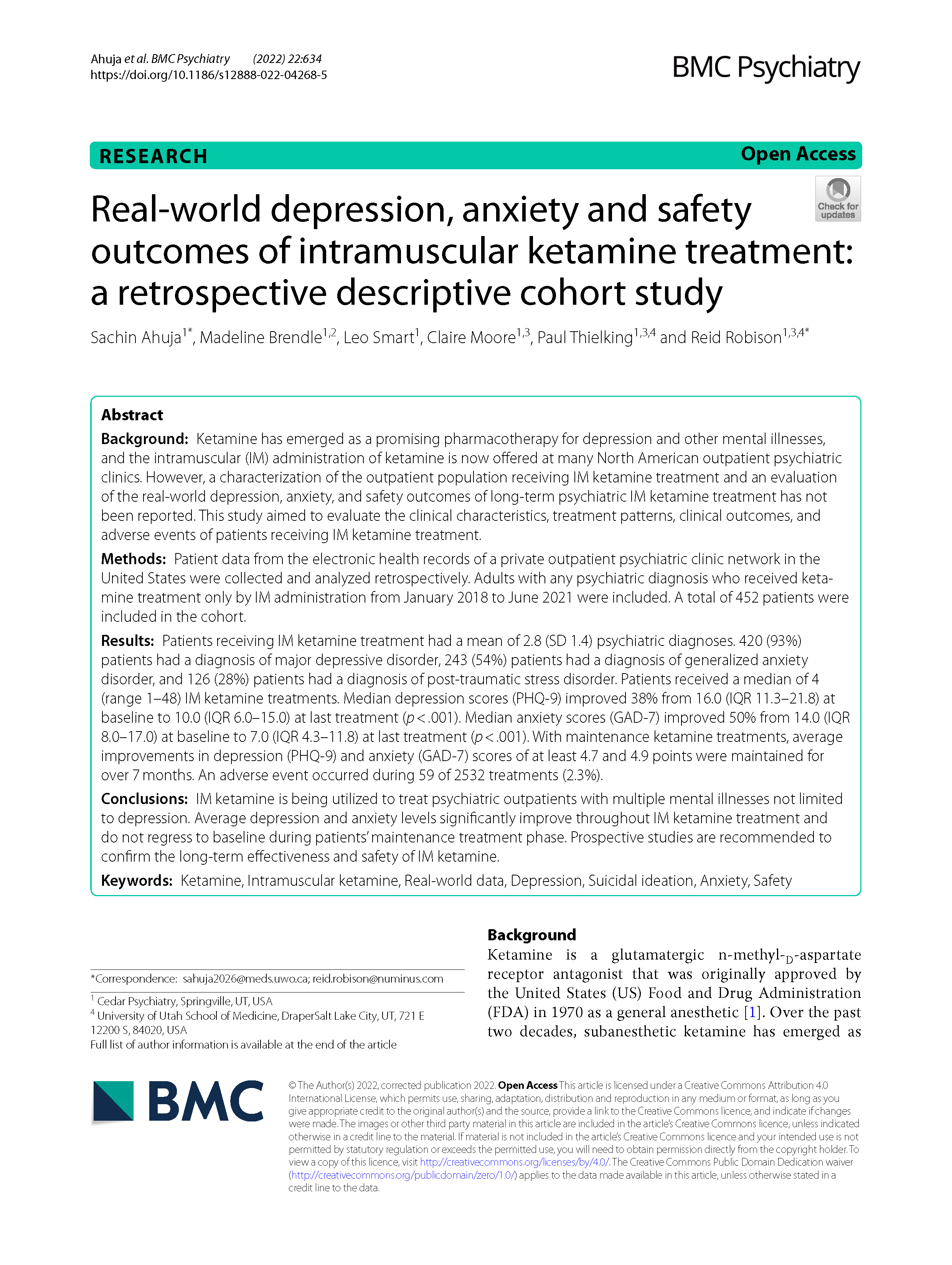
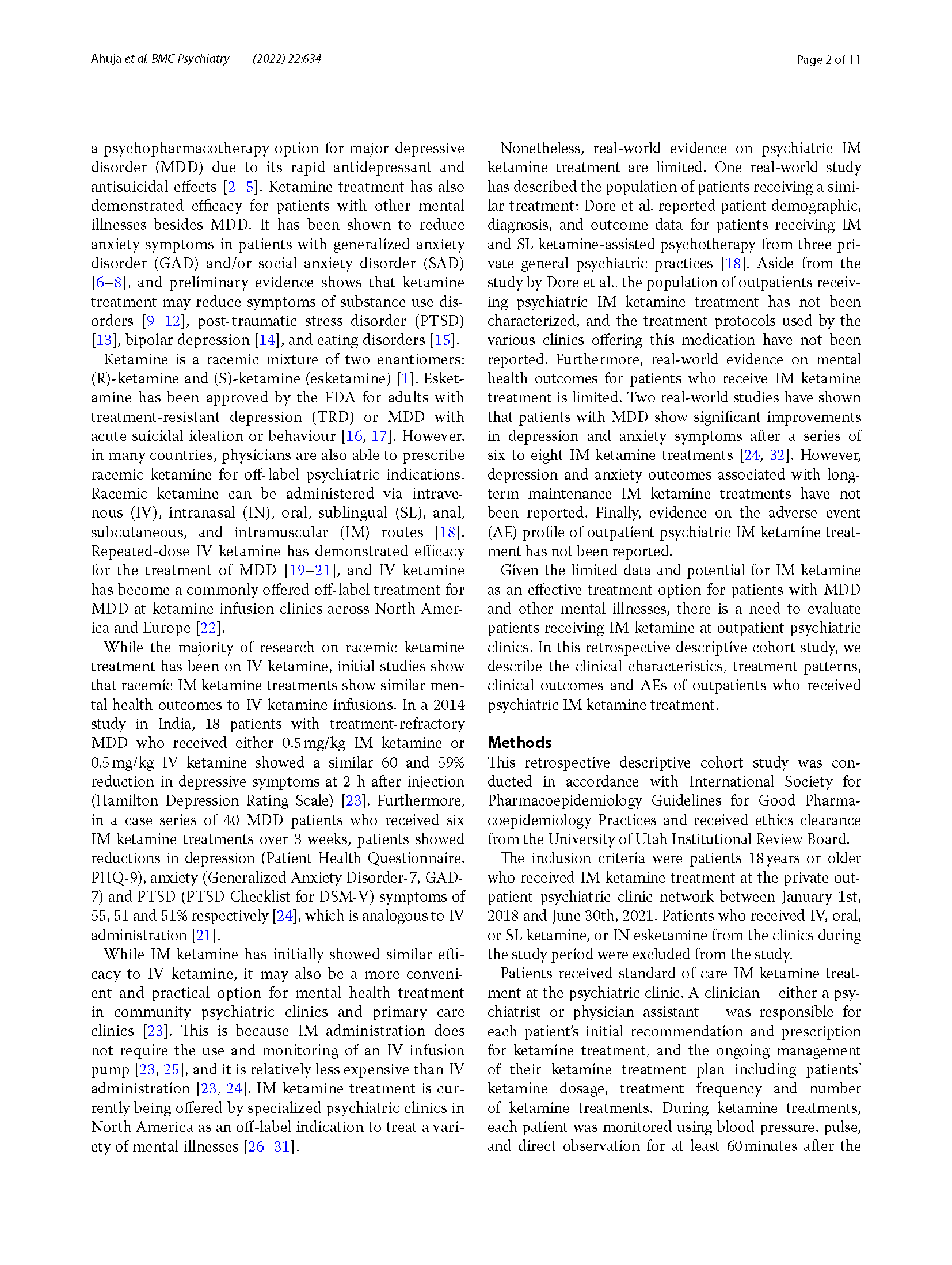
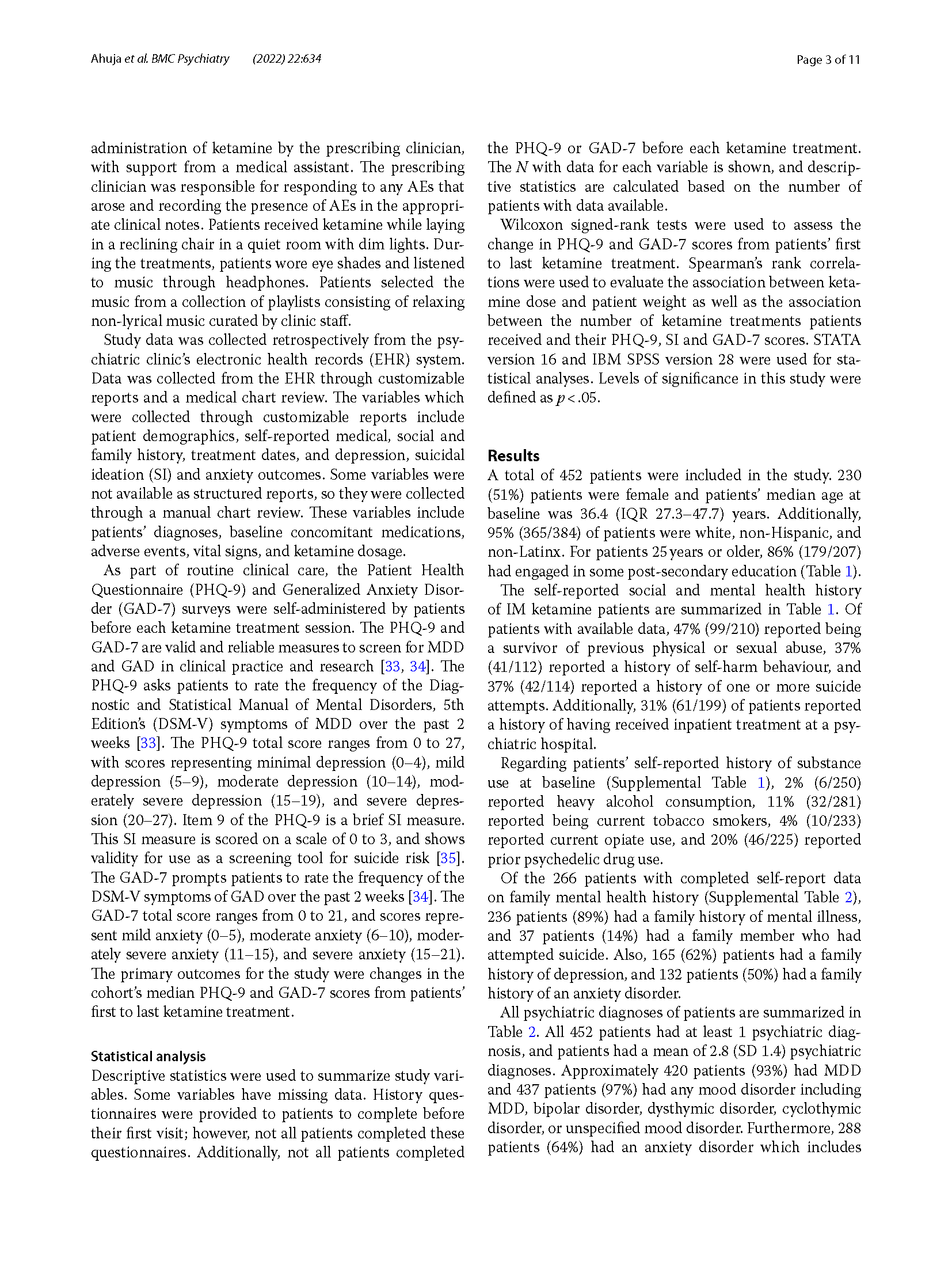
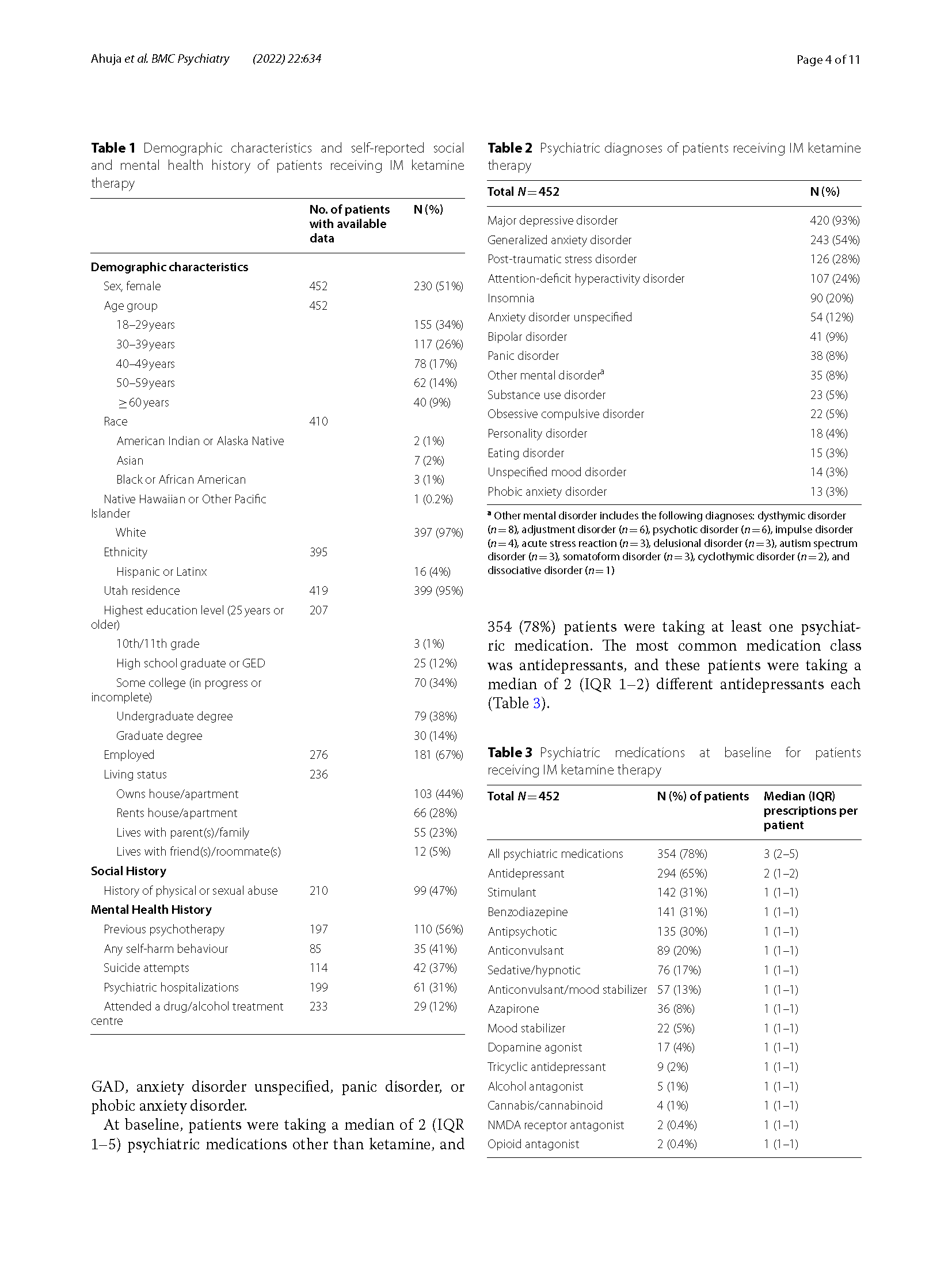
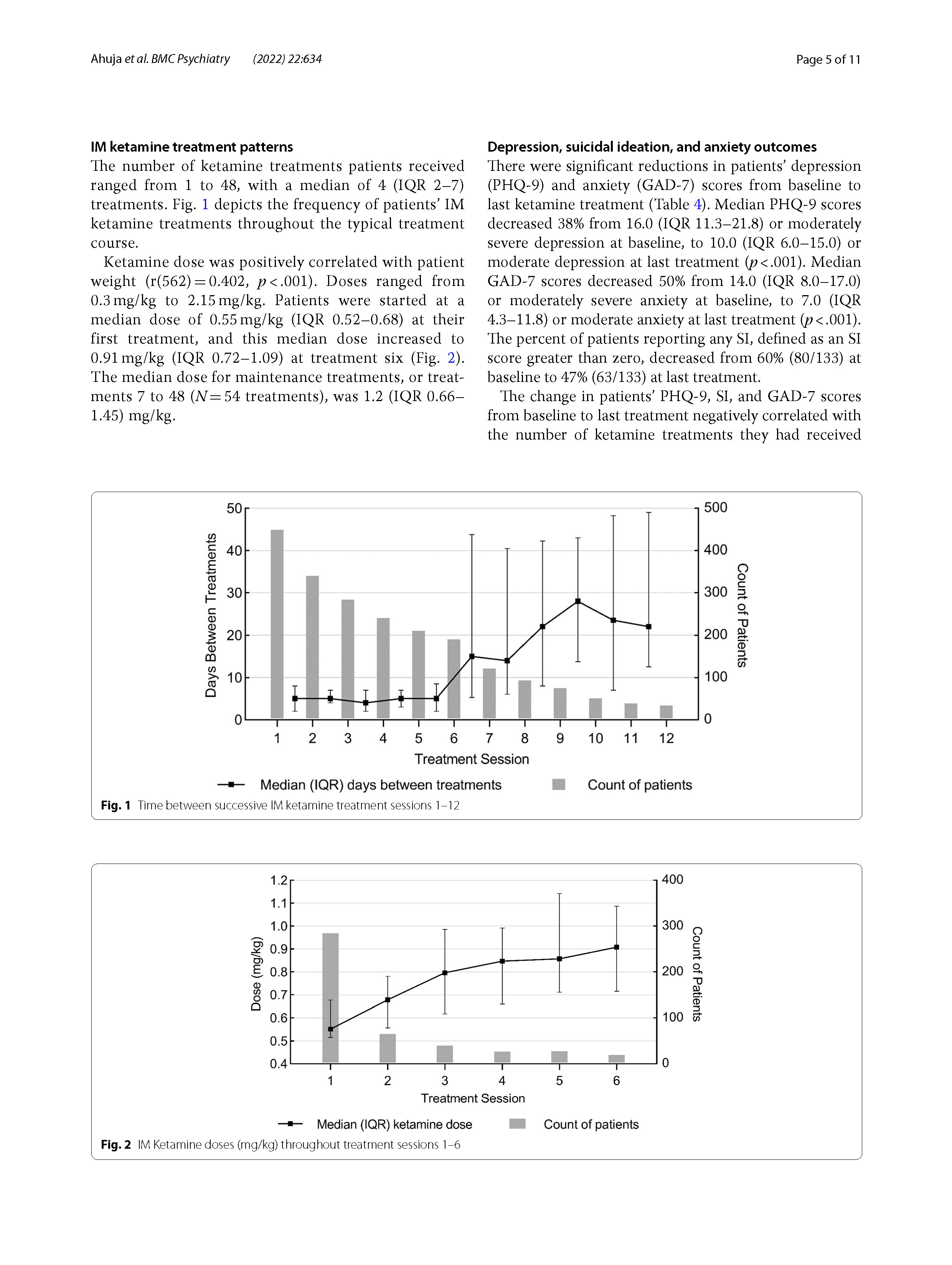
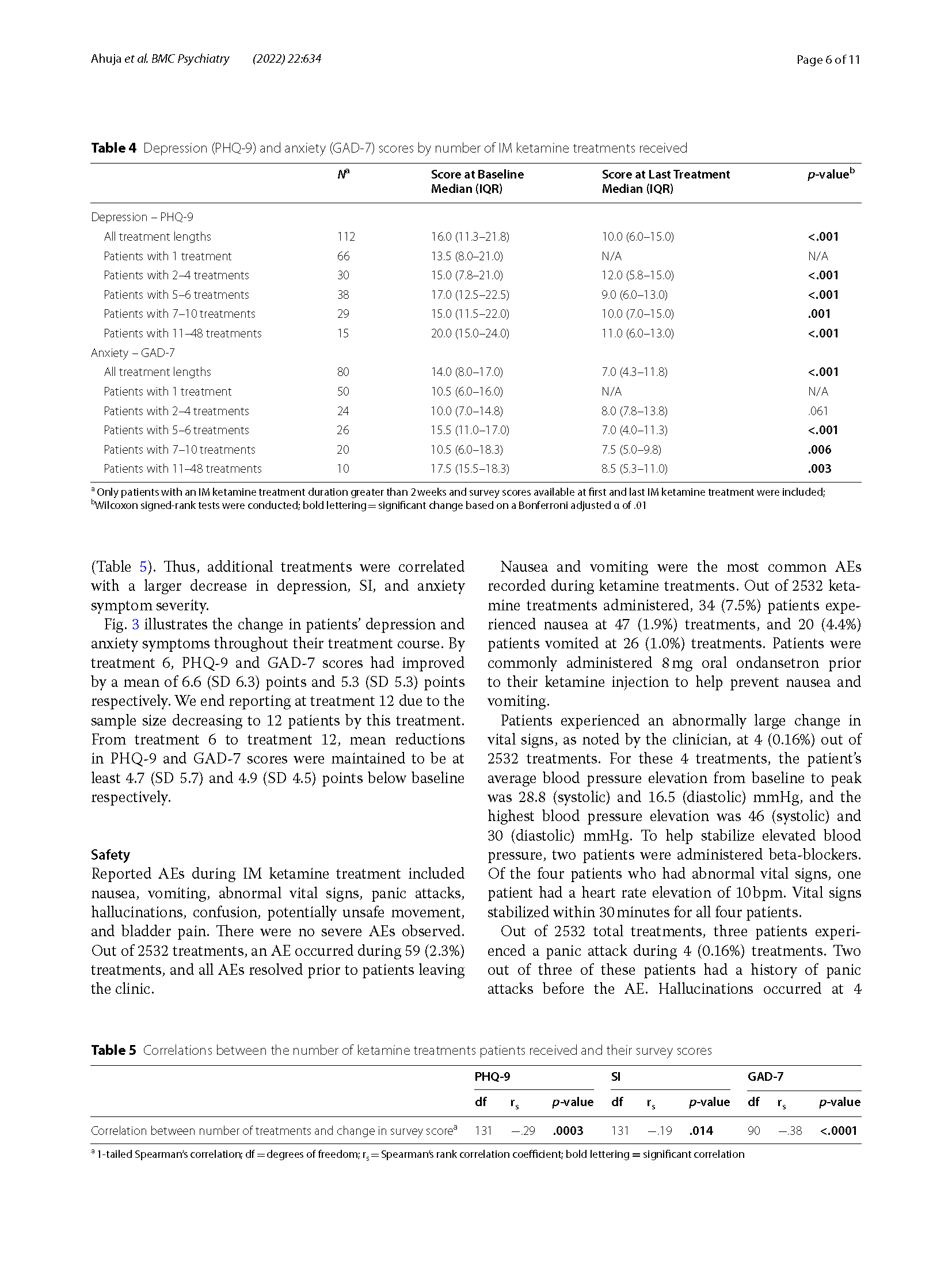

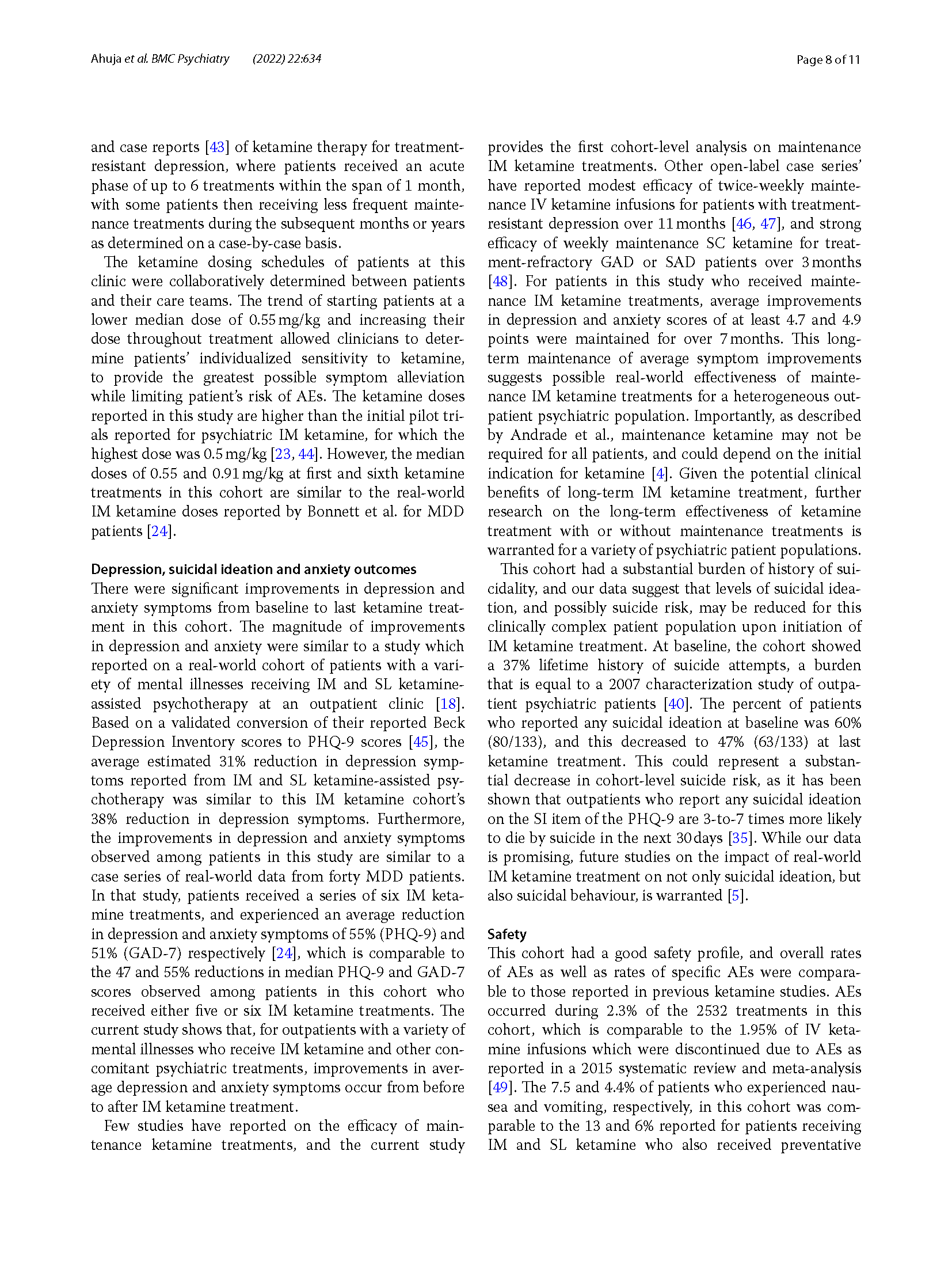


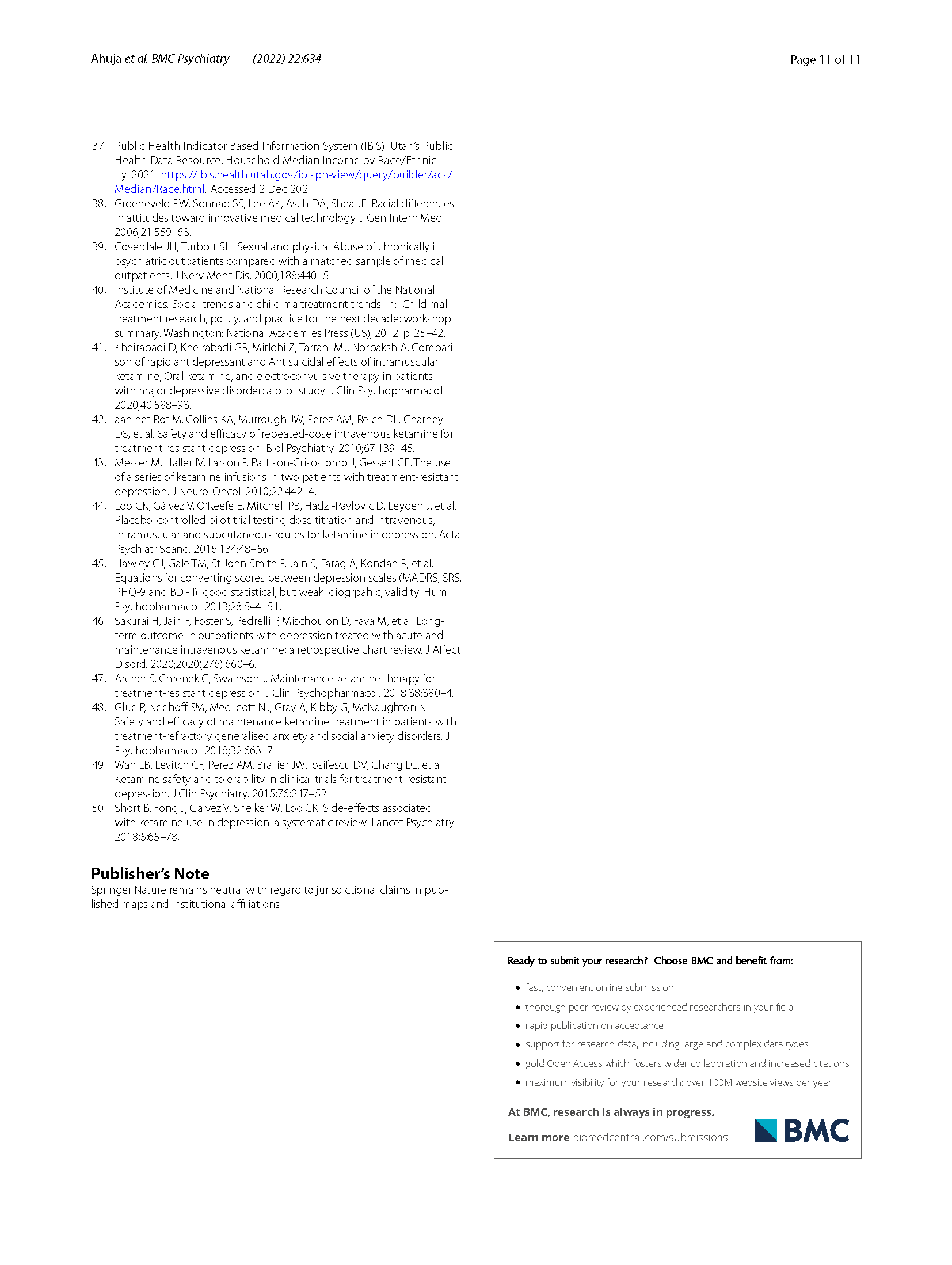
Citation:
Ahuja, S., Brendle, M., Smart, L. et al. Real-world depression, anxiety and safety outcomes of intramuscular ketamine treatment: a retrospective descriptive cohort study. BMC Psychiatry 22, 634 (2022). https://doi.org/10.1186/s12888-022-04268-5

